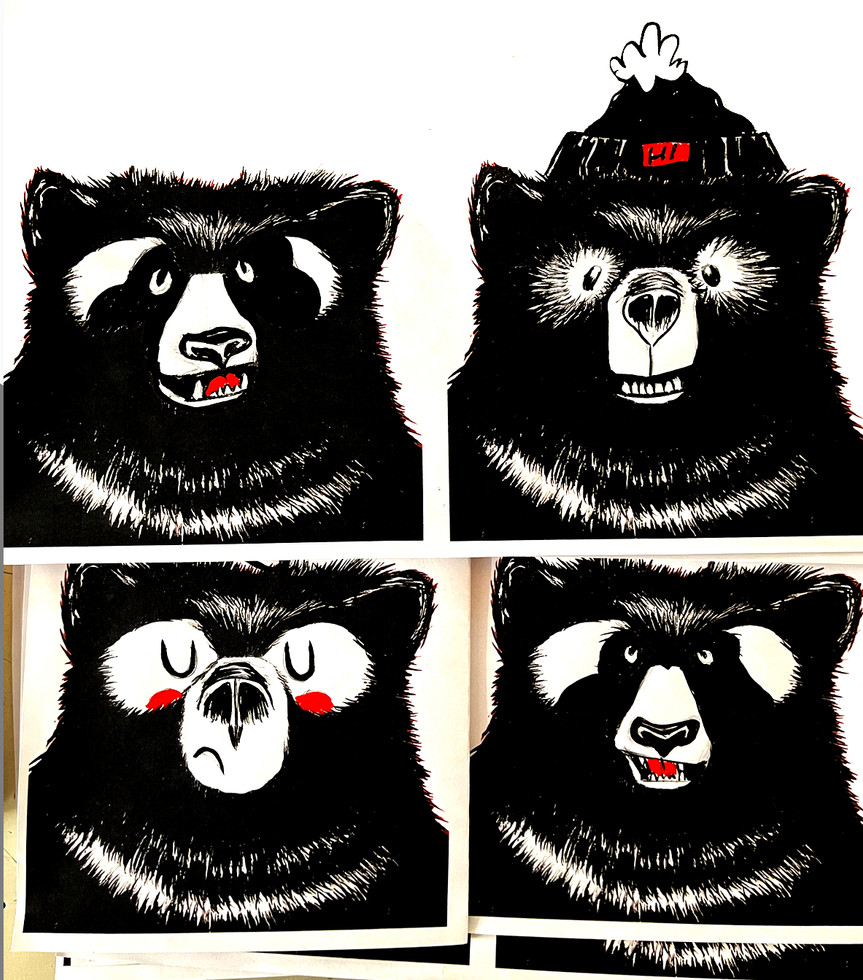
Quick Links:
NFTs and responsive website
Roles: UX Designer and Researcher
Many artists are moving towards NFTs to find new audiences for their artworks. NFT's are a way of categorizing digital artworks that enables designers to monetize their work. It's supposed to be a quicker process and a more accessible way for designers to produce work and reap the rewards for their creativity.
Working digitally helps me to see my work through a different lens. A computer usually is my last step when I’m creating after completing all the prep work. When asked to collaborate with Studio 606 on NFTs, I jumped at the chance. After some research we found the mechanics behind randomizing the NFTs.


Background
I am a painter and illustrator at heart. When I create, I reach for pencils, paper, inks and gouache. My color palette is limited, that way I can turn up the personality of the woodland creatures. I also designed the site at wildhighclub.com


Research
One hero character is selected as the main model. After that, different sets of eyes, noses, backgrounds and headgear can be added. These can be shuffled on the main model, creating many different combinations and new characters in the final.
Our competitive research showed that art generated from computer algorithm can feel a bit stiff and have a number assigned to the file. This can cause the final result to lack character.


Sketching & Iteration
To keep a hand done feel in the final images, I printed out templates on paper. This allowed me to sketch directly on the paper with pencil and ink. That way the ideas were able to flow and be shared more freely.
Once I picked my zen bear(beer) as the base, I digitally removed the horns, eyes, nose and mouth. The result is an open space to customize.

Round One
It was a natural choice to start by painting more bears, pandas, and play with expressions. We tested the first round sketches with 5 people and got positive responses from the initial designs.

Round Two
Then things got really fun, I added imagery from my early influences. This gave a unique feel and upped the enjoyment. There were many more possible combinations once I leaned into using robots, arcade characters and fantasy animals. Thats when the project really began to take shape.
_gif.gif)
Collaboration
We worked together across the country over many late night zoom sessions. I am based in San Francisco and he is in Chicago. Getting the individual elements to line up and look natural took trial and error. We found the best way to test this was to fail upwards or "build the plane while we're flying it." It was exhilarating! The process taught me new ways to see my work, collaborate, communicate and create.
_gif.gif)
Taxonomy
After we figured out the visual combinations, we named them all randomly by connecting names to the each of the different eyes, noses and headgear pieces. I created a spreadsheet that had a "first name" or a "last name" attached to each of the elements that are added to the character.
Our developer coded solutions to this in Python. After the programming was solved and ran, "NFT #34689" becomes "MF SMIRK." This helped communicate the character almost like a new color to paint with.




NFTs
After tons of lightning, beeps, laughter, bear growls and maybe a fog horn, we have the mixed up world of the Wild High Club. NFTs randomized characters, backgrounds and names. I've added 4 examples above. All 420 NFTs can be viewed on OpeanSea at the link here

Website is up at wildhighclub.com. This includes a link to the NFT contract and example shots of the NFTs. I now have a new cast of characters from the resulting combinations. We came in well under budget, broadened our audience and learned the benefits of an algorithm for art creation.